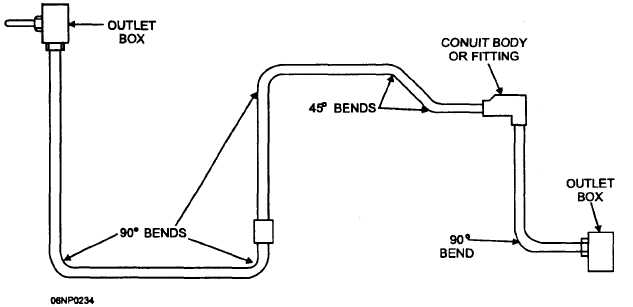Question: Do two separate pieces of EMT conduit joined by a connector qualify as a "pull point"?
Background: I need to make six 90 degree turns in 2" EMT conduit to route wire for a new sub-panel which means my run is subject to NEC 2011 clause 358.26:
358.26 Bends — Number in One Run. There shall not be
more than the equivalent of four quarter bends (360 degrees
total) between pull points, for example, conduit bodies and
boxes.
 However, I cannot find anywhere that the NEC specifically defines a "pull point" other than the examples of "conduit bodies and boxes". It makes sense to me that "conduit bodies" means having two separate pieces of conduit joined with a connector (as per the connectors to the 90 degree bend in the above picture) because the conduit bodies can be separated to allow for pulling without over-stressing the wire, but I want to confirm if this is the correct interpretation.
However, I cannot find anywhere that the NEC specifically defines a "pull point" other than the examples of "conduit bodies and boxes". It makes sense to me that "conduit bodies" means having two separate pieces of conduit joined with a connector (as per the connectors to the 90 degree bend in the above picture) because the conduit bodies can be separated to allow for pulling without over-stressing the wire, but I want to confirm if this is the correct interpretation.
Or, do I need a special elbow pull fitting like shown below (the picture shows smaller conduit), or are these fittings just for convenience if you later decide to pull more wire through the conduit?

Picture credit of http://www.diyadvice.com/diy/electrical/cable/metal-conduit/
EDIT: Thanks to all for your answers. I somehow overlooked the definition of conduit body in the standard:
Conduit Body. A separate portion of a conduit or tubing
system that provides access through a removable cover(s)
to the interior of the system at a junction of two or more
sections of the system or at a terminal point of the system.
Boxes such as FS and FD or larger cast or sheet metal
boxes are not classified as conduit bodies.


